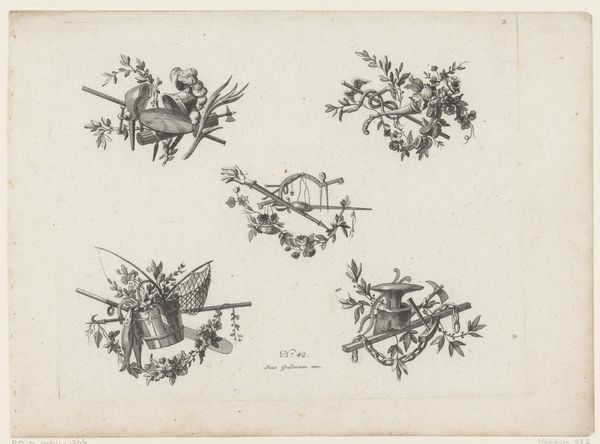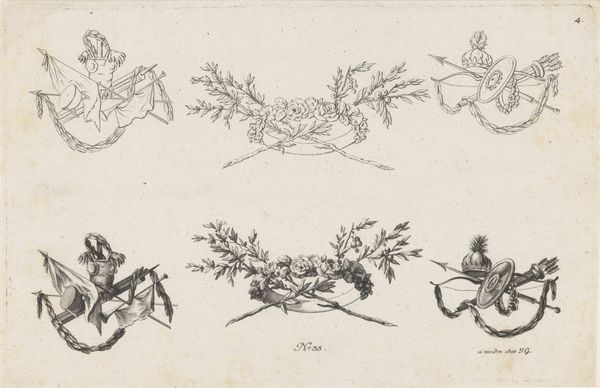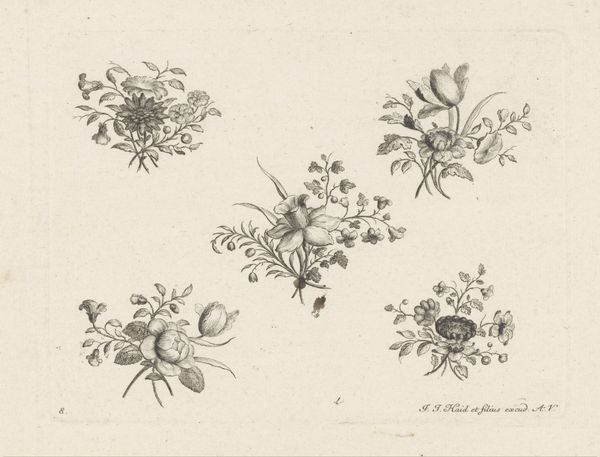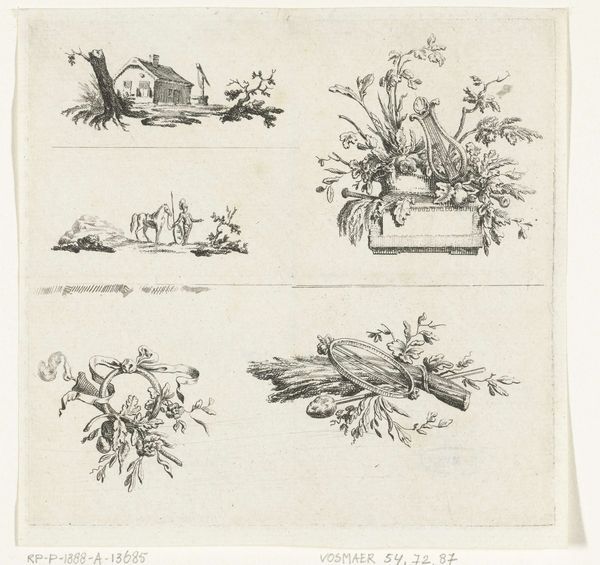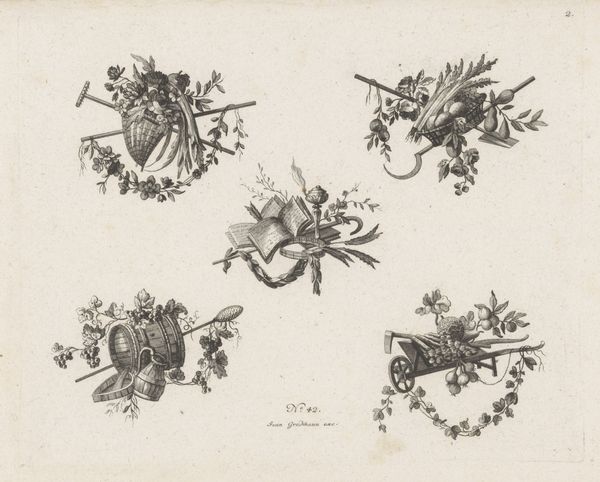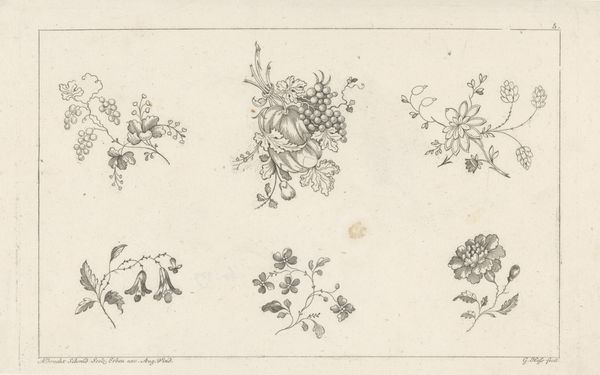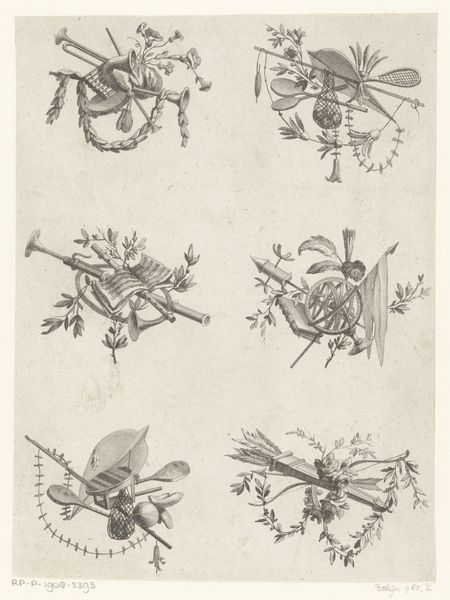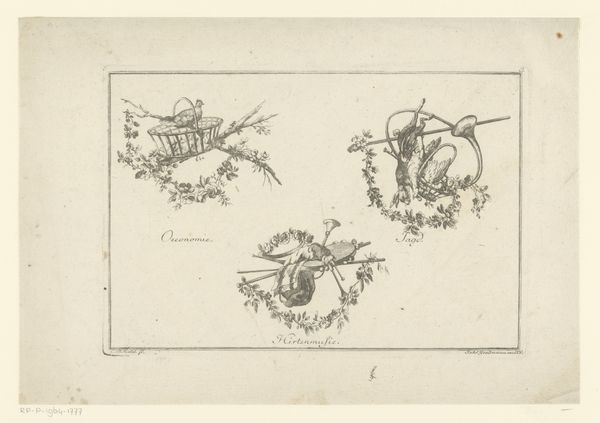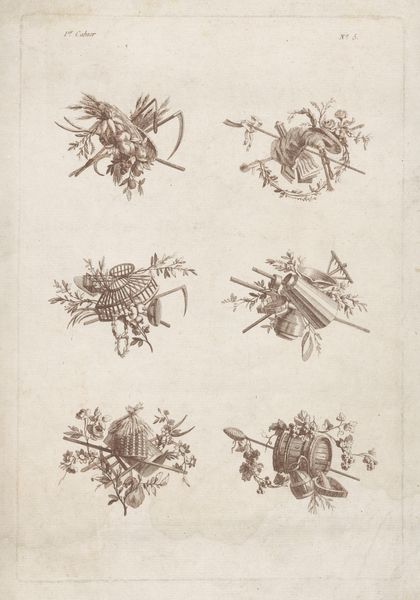
Dimensions: height 178 mm, width 238 mm
Copyright: Rijks Museum: Open Domain
Editor: Here we have an engraving from between 1751 and 1798 entitled "Trofeeën," made by an anonymous artist. I notice there are five groupings of different objects: books, horns, flowers… it almost looks like still lifes, but abstracted somehow. How do you interpret this work? Curator: These "trophies" of objects speak volumes about the values and priorities of the late 18th century, when knowledge, artistic pursuits, and perhaps even the military, were elevated as sources of status and cultural capital. Consider, who has access to these objects, these instruments of knowledge? The engraving isn't just a pretty picture; it’s a reflection of a deeply stratified society. What does the printing process itself say about access? Editor: I hadn't thought of it that way. I was focusing on the arrangements themselves as being almost whimsical, but it makes sense that there is a level of privilege involved. The engraving medium would allow more people to have access to the imagery than, say, an original painting. Curator: Precisely. It becomes a tool for disseminating ideals, shaping public perception. What stories do these idealized arrangements tell, and who gets to write them? And, of course, who is left out? Editor: So, in a way, it is also making a statement by excluding the working class from that kind of lifestyle and learning? Curator: Absolutely! Think about the implications. Art is never created in a vacuum. "Trofeeën" gives us a peek into the intricate dance between artistic expression, societal structures, and power dynamics of the 18th century, especially in relation to class. Editor: This makes me look at art completely differently! Thanks! Curator: My pleasure.
Comments
No comments
Be the first to comment and join the conversation on the ultimate creative platform.
